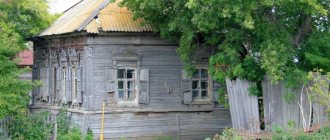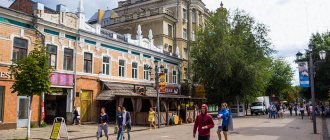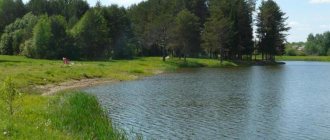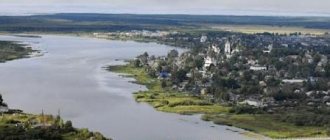The city of Petrovsk is depressed, but not broken
The city of Petrovsk, Saratov region, traces its history back to the end of the 17th century. In 1698, by personal decree of Peter I, a stone fortress was founded here to protect the southern borders of Russia from periodic raids of the Crimean Tatars. The ancient fortress, alas, has not survived to this day. But many other architectural monuments of Petrovsk have been preserved, dating mainly to the second half of the 19th century.
Modern Petrovsk is a rather depressing city. A large military airfield located on its outskirts was abandoned back in the 90s. The plant, which once served as a city-forming enterprise, today employs only 700 people. Out of unemployment and despair, local residents recently even asked the authorities to annex their city to the neighboring Penza region!
But even despite all the economic difficulties, Petrovsk continues to live. Moreover, in recent years its residents have seriously taken up local architectural monuments. Using their own funds, they completely restored two ancient churches - Holy Protection and Kazan.
Saratov bus stations
Saratov bus station is located at st. Moskovskaya, 170 (schedule here). Not far from the main bus station building there is a Magnit grocery supermarket. There is free car parking on the station premises. Opening hours: from 5:30 to 22:00, seven days a week.
Popular routes of regular buses: Moscow, Sokur, Yagodnaya Polyana, Voronezh, Volgograd, Tambov, Kuznetsk, Balakovo, Voskresenskoye, Ershov, Ivanteevka, Yoshkar-Ola, Penza, Belgorod, Samara, Saransk, Togliatti, Nizhny Novgorod, Uralsk, Penza, Kursk .
Steppe in the middle of the city. How and why did Saratov almost catch up with Moscow across the square?
The main goal of creating an agglomeration is to attract federal money to Saratov, which the city infrastructure needs. The picture shows rescuers at a destroyed bridge on the Medveditsa River in the Saratov region in April 2022. Photo: Dmitry Chernenkov / TASS / Forum Since the beginning of 2022, Saratov has become the second largest city among all Russian cities. Over the past year and a half, Saratov has been undergoing territorial reform, as a result of which almost 80 settlements have already become part of the regional center. The city has increased its area more than five times, and now a significant part of its territory is the Volga steppe. Local officials say the changes will allow the city to qualify for more federal money. However, despite the expansion, Saratov, with a population of 900 thousand people, was never able to become a millionaire.
On January 1, 2022, a regional law came into force, according to which the territory of the entire Saratov district of the region of the same name becomes part of the municipal formation “City of Saratov”. In addition, the mayor's office has already announced that in the near future part of the neighboring Tatishchevsky district will also be annexed to the regional center. If in 2022 the city's territory was just under 400 square kilometers, now it has grown to 2,100 - this is 460 square kilometers less than the area of Moscow and 660 more than St. Petersburg.
“This is such an old Soviet theme - consolidation. There were several cities that suddenly decided to become millionaires at the expense of the surrounding villages. What is now called agglomerations. Perm did this, Novosibirsk did this. Saratov didn’t invent anything new,” says the political scientist and author of the telegram channel “Davydov. Index" Leonid Davydov . – Basically, this is an application for a project. Let's make it a millionaire. You can do some general recreation, you have a lot of residents, you have a correspondingly lot of potential workers, you can invite companies to open a business, and so on. That is, to reverse this fate, when the evil writers of the 19th century wrote about the Saratov wilderness.”
In 2007, candidate for deputy of the Saratov Regional Duma Alexander Sidorenko proposed to annex the largest satellite city - Engels - to Saratov and name the new city Putin or Gagarin. The city did not support this idea. The photo shows a monument to Gagarin on the Cosmonauts Embankment in Saratov. Photo: Philip Kochetkov / TASS / Forum
In turn, Saratov political scientist Igor Semenov is confident that the territorial reform indicates, first of all, a crisis of governance.
“The expansion of the city is not justified by anything. Saratov is a dying city. There have been no hints of development over the past two decades, but expansion is underway at this time. It is not caused by objective economic or social reasons. The reasons are exclusively political: it is necessary to show successes to the leaders, and when they are not there, “Potemkin villages” begin. The country's leadership has an idea: to build agglomerations in Siberia. We decided to see how it would turn out in Saratov. Let them get into trouble if that’s what they need,” says Semenov.
Yandex maps
Protests in villages
Back in the days of the Soviet Union, they wanted to annex the largest satellite city, Engels, to Saratov. According to the plan, the total population was supposed to reach a million people, which would lead to a better supply of goods and the construction of the metro. In 2007, a candidate for deputy of the Saratov Regional Duma, Alexander Sidorenko , came up with the same idea, who proposed calling the new city Putin or Gagarin. However, each time this initiative faced resistance from both ordinary residents of Engels and local elites - the cities were never united.
The current expansion began in the summer of 2022, when the Saratov mayor's office published a letter from residents of the Kalashnikov village, which borders the city to the south. Maxim Sidenko, suddenly arrived to meet them .
Over the next months, deputies of village councils of the municipalities of Bagaevka, Aleksandrovka and Krasny Tekstilshchik, and then the villages of Rybushki and Sinenkoe, made a similar request to the city authorities on behalf of the residents. The accession procedure involved holding public hearings, and then voting by village deputies. It was then that the initiators of the expansion of Saratov faced the most serious difficulties.
Villagers came to public hearings and explained in harsh terms to officials that they were against unification with the city, and representatives of the Communist Party of the Russian Federation, who joined the protest, accused the organizers of the event of transporting state employees and falsifying the voting results. Deputies of the village council of the Aleksandrovskoye municipal formation voted against joining the regional center. However, the Saratov district administration said that if the entire district becomes part of the city, then Alexandrovka will have no choice.
Residents of the village of Ust-Kurdyum, in turn, having learned about joining Saratov, decided to hold a referendum, but the regional election commission refused them, citing errors in the paperwork.
Future residents of the renewed Saratov were afraid that after joining the city they would lose benefits, and taxes and tariffs would increase. To reassure people, Mayor Mikhail Isaev signed a decree according to which each new settlement will retain its rural status and associated preferences. This promise influenced the final version of the law on the Saratov agglomeration.
“There is a municipal entity, the city of Saratov, which includes 80 settlements. This is the city of Saratov itself, two more urban and 77 rural settlements. This is directly stated in the law of the Saratov region, and therefore guarantees the preservation of rural benefits for residents,” said Sergei Zyuzin, .
Bridge over the Volga in Saratov. Photo: Dmitry Rogulin / TASS / Forum
The village of Bagaevka and the village of Krasny Tekstilshchik have been part of Saratov for a year, says Zyuzin. Since then, he said, funding for these territories has increased 14 times.
“If previously the budget of the municipalities of Bagaevskoye and Krasny Tekstilshchik totaled a little more than ten million rubles, now, through participation in various programs, 140 million rubles were allocated to these territories over the past year,” says Zyuzin.
“They don’t go unnoticed”
After the authorities managed to include the first municipalities in the agglomeration, things went easier. In the second half of 2021, the entire Saratov district voted to join the regional center. True, this required some changes in management structures. Thus, the entire administration of the Saratov district, which was a structural unit of the regional government, turned into the Committee for the Development of Territories of the Saratov City Hall, and all rural administrations became its territorial divisions.
“In the new territories, citizens were afraid that the authorities would move away from the residents and it would be more difficult to resolve some issues. Territorial divisions appeared where there were rural administrations in each locality. They also continue to resolve current issues, but only as divisions of the Saratov administration department,” explains Zyuzin.
Construction of the Jamaica residential complex in Saratov. June 27, 2017. Photo: Artem Geodakyan / TASS / Forum
In addition to executive authorities, all settlements of the Saratov region had a total of 140 deputies of village councils. They were dealt with simply: all powers of deputies were terminated, and instead of village councils, new representative bodies were created - public coordination councils. According to the city authorities, they also offered to include those residents who actively resisted joining Saratov.
At the same time, the interests of citizens of the new agglomeration at the city level began to be represented by deputies of the Saratov City Duma, the sixth convocation of which was elected last fall. It is not yet clear which of them is now responsible to the residents of the new territories.
Why did they expand?
For a long time since the beginning of the territorial reform, the true reasons for the creation of the Saratov agglomeration remained a mystery to the general public, and the answers of officials often sounded abstract. While statements about certain investment or infrastructure projects were heard from the official platforms, the townspeople were wondering why Saratov was actually expanding. Thus, some assumed that dangerous production would appear in the new territories, others said that now apartments for orphans and displaced persons from emergency housing would be built tens of kilometers from the center. However, over time, officials clarified their position. It became clear that the main goal of creating an agglomeration was to attract federal money to the city.
View of Saratov. June 2022. Photo: Artem Geodakyan / TASS / Forum
In turn, Natalya Zubarevich , does not share the confidence of the leadership of the Saratov region.
“Saratov has no money. The region – the Saratov region – also doesn’t have much. If you crow about something, then maybe they’ll knock you out of some kind of infrastructure project. In Saratov, all utilities are in a terrible state, pipes are bursting in the streets. If they give us money to at least repair utility networks, it will be good. But the Ministry of Finance will say: “There are many of you, but I am alone.” If suddenly the Ministry of Housing and Communal Services allocates Saratov for project financing, then you are lucky. But we don’t know by what criteria money will be distributed for infrastructure projects,” Zubarevich told “That’s So.”
Meanwhile, political scientist Leonid Davydov believes that the attempt of the Saratov authorities may be crowned with success.
“There is a theoretical chance to get money to use it. We have no other investor, only the state budget. And we have dozens, if not hundreds, of such “Saratovs” in Russia. You need to come with at least something. Now they will say: “But we have a lot of land!” All territories that are able to invent something offer themselves as a point for investment from the National Welfare Fund. Saratov also thought about what it could offer. Well done, they came up with this idea. As they say: if you fell into the milk, move your legs. If you can whip sour cream, you’ll get out somehow,” he says.
Vasily Lopata for “That’s So”
The city of Engels, Saratov region and its unusual history
Engels is the second largest city in the region by population. Known since 1747. The city grew out of a Chumakov settlement. On its coat of arms you can see a huge bull carrying a bowl of salt on its back. Exactly the same monument can be seen today in this city.
From 1923 to 1941, the city of Engels, Saratov region, managed to be the capital of the autonomous republic of the Volga Germans. The latter was abolished immediately after the start of the Great Patriotic War. Due to their territorial proximity, proposals have been repeatedly put forward to unite Engels and Saratov into one settlement. But for now Engels remains an independent city with a population of 225 thousand people.
Where is Saratov?
The city of Saratov is the administrative center of the Saratov region, which is located on the right bank of the Volga River. Not far from the city is the Guselka River (34 km). The distance from the city to Moscow is about 850 km. The southern and central parts of Saratov are located in a basin, which is surrounded by low mountains on three sides: Lysaya, Sokolovaya, Altynaya, Uvek, Lopatina. The approximate population is about 850 thousand people. The total area of the city is 394 square kilometers. In the western part the city is limited by small rivers: Elshanka, 2nd Guselka, Nazarovka.
- The vegetation of the city is a mixed-grass forest-steppe.
- The soil is southern and ordinary chernozems.
- The climate of Saratov is temperate continental.
- The average air humidity per year is 70%.
- The annual precipitation rate is 475 mm.
Saratov is located in the time zone MSK+1, the offset relative to Coordinated Universal Time (UTC) is +4.
Balakovo – the energy capital of the Volga region
The city of Balakovo in the Saratov region was founded in the second half of the 18th century by Old Believers who returned to the banks of the Volga by decree of Catherine II. Today it is the most important energy center of the country. This is one of two cities in Russia in which a thermal, nuclear and hydroelectric power station operates simultaneously.
Balakovo Nuclear Power Plant is the most powerful in the country. Every year it produces about 30 billion kWh of electricity (or 20% of Russia's nuclear energy). In addition, the Balakovo NPP became the country's first nuclear power plant to be re-commissioned after the collapse of the USSR. Today there are four power units operating here, and a training center that trains not only Russian nuclear scientists, but also colleagues from Belarus, China, Iran and India.











